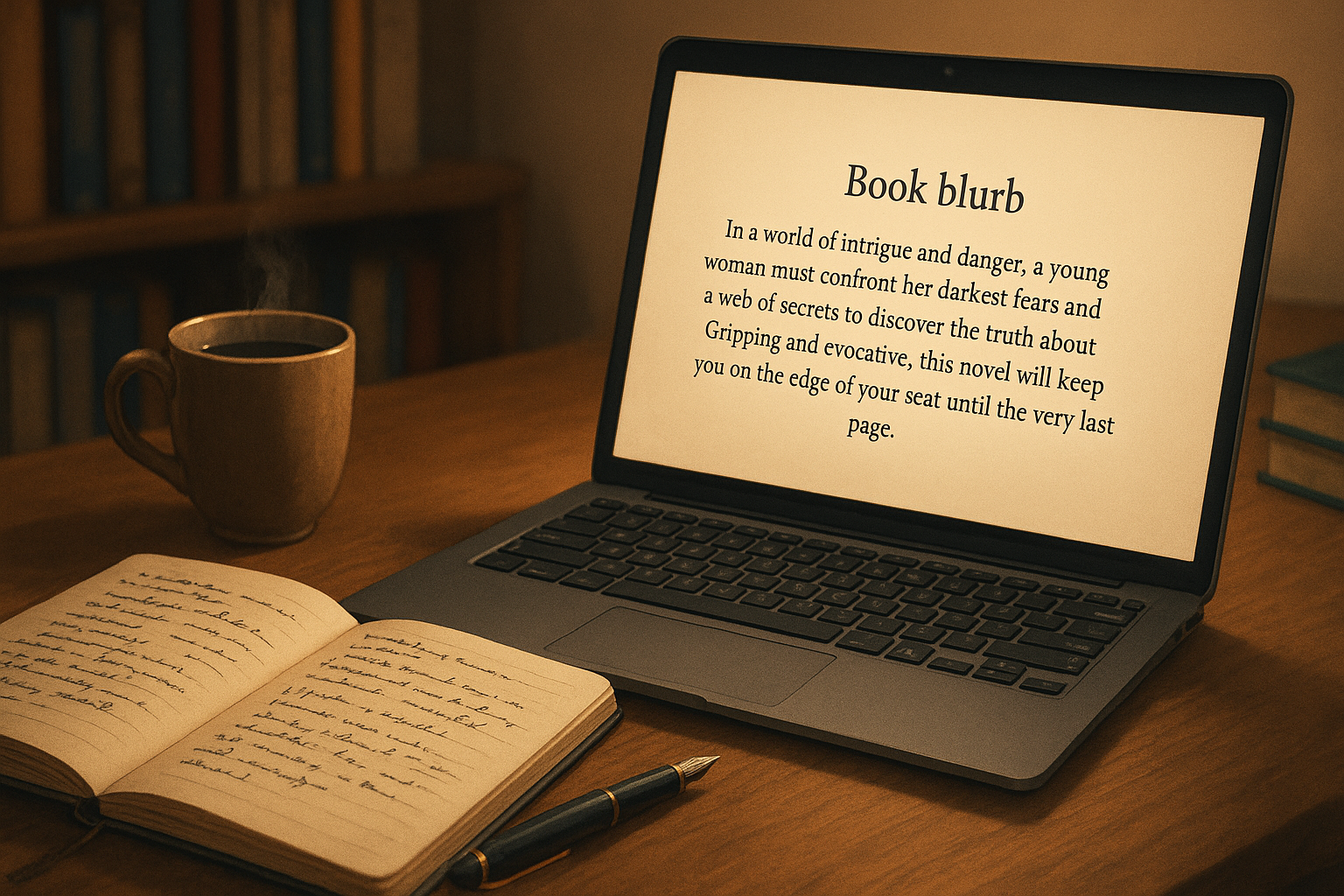The 8-Second Challenge
Studies show that the average online shopper decides whether to explore a book further or move on within just 8 seconds of reading the blurb. This makes your book description one of the most critical selling tools at your disposal.
The Anatomy of an Effective Blurb
A compelling book blurb typically follows this structure:
1. The Hook (1-2 sentences)
Start with an attention-grabbing statement, question, or scenario that immediately pulls the reader in. This is your headline—make it count.
2. The Setup (2-3 sentences)
Introduce your main character and their situation. What makes them interesting? What world do they inhabit? What's at stake?
3. The Conflict (2-3 sentences)
Present the central conflict or challenge. What obstacles must be overcome? What forces are in opposition?
4. The Stakes (1-2 sentences)
Explain what happens if the protagonist fails. Why should the reader care?
5. The Promise (1-2 sentences)
Hint at the journey the reader will experience without giving away the ending. What emotional experience are you offering?
Genre-Specific Techniques
Different genres require different approaches:
Thriller/Mystery
Focus on tension and unanswered questions. Use short, punchy sentences to create pace.
Romance
Emphasize the emotional journey and the chemistry between characters. Hint at both the obstacles and the reward.
Fantasy/Sci-Fi
Highlight your unique world-building elements and the epic nature of the story, but keep it accessible.
Non-Fiction
Lead with the problem you solve or the transformation you offer. Use bullet points to highlight key benefits.
Words That Sell
Certain words and phrases have been proven to increase conversion rates in book descriptions:
- Discover (promises new information or experiences)
- Secret (appeals to curiosity)
- Journey (suggests transformation)
- Unputdownable (creates FOMO - fear of missing out)
- Heart-pounding (promises emotional engagement)
Formatting for Readability
Most online retailers allow some HTML formatting in book descriptions. Use it strategically:
- Break up long paragraphs (no more than 2-3 sentences each)
- Use bold text for important phrases
- Include subheadings for non-fiction books
- Consider adding a short list of "perfect for fans of..." comparisons
Before and After Example
Before: "This book is about a detective who is trying to solve a murder case in London. He meets many obstacles along the way and has to use his skills to find the killer before more people die. There are many twists and turns in the plot."
After: "What if the serial killer hunting London's streets... is the only man who can stop the next murder? Detective James Moore's ability to see through the eyes of killers made him the Met's best homicide detective—until the visions started appearing even when there wasn't a case. Now, as a ruthless murderer terrorizes London, James must confront a horrifying possibility: the killer's mind he's accessing might be his own."
Testing Your Blurb
Before finalizing your blurb, test it with these methods:
- Read it aloud to check flow and pacing
- Ask beta readers which parts make them most interested in the book
- Try A/B testing different versions using Read & Rate's Blurb Feedback tool
- Check if it passes the "skim test"—does it convey the essence even when quickly scanned?


